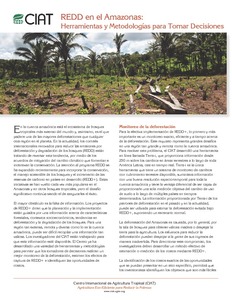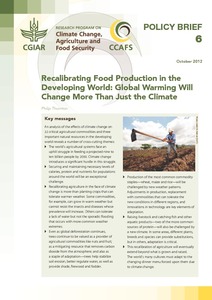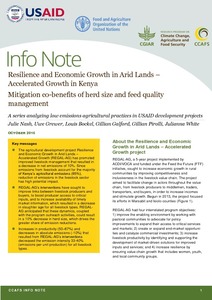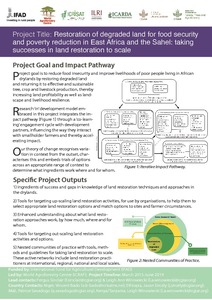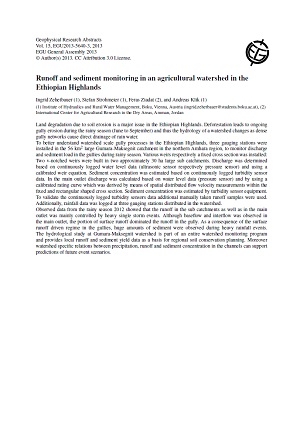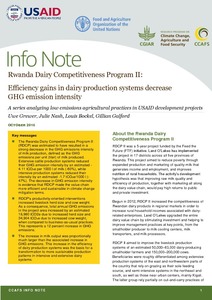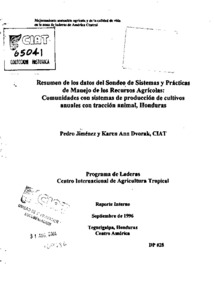Reducing deforestation and enhancing sustainability in commodity supply chains: interactions between governance interventions and cattle certification in Brazil
A large number of governance interventions are being developed in order to reduce deforestation and enhance the sustainability of commodity
supply chains across the tropics. The extent to which individual agricultural commodity supply chain interventions can achieve scale, and
environmental or social objectives, depends in part on the ways in which those interventions interact with other interventions. We use a casestudy
of the new Sustainable Agriculture Network (SAN) cattle certification program in Brazil to explore the different ways in which governance
Rapid assessment and SWOT analysis of non-technical aspects of natural wastewater treatment systems
A general overview and technical details of natural treatment systems (NTS) including constructed wetlands (CWs), waste stabilization ponds (WSPs), duckweed ponds (DPs), water hyacinth ponds and polishing ponds have been provided in Chapters 8 and 10. As outlined in Starkl et al. (2013), often assessment studies focus on technical aspects only, with no or little consideration of the non-technical aspects. It has been argued that the non-technical aspects do influence the long-term sustainability of technologies and therefore their critical assessment is of importance.
Recalibrating Food Production in the Developing World: Global Warming Will Change More Than Just the Climate
An analysis of the effects of climate change on 22 critical agricultural commodities and three important natural resources in the developing world reveals a number of cross-cutting themes: The world’s agricultural systems face an uphill struggle in feeding a projected nine to ten billion people by 2050. Climate change introduces a significant hurdle in this struggle.
- Securing and maintaining necessary levels of calories, protein and nutrients for populations around the world will be an exceptional challenge.
Reflexions on Agro-pastoralists in the WANA region: challenges and future priorities
Rangeland resources are among the most important – and almost certainly the most neglected – agro ecosystem component in dry areas. They are the largest land-use category, home to the poorest segment of the population, and crucial for millions of small-scale livestock producers. The availability of grazing resources for livestock in the world’s drylands is low and erratic due to the recurrent droughts in which animals can often fall victim.
Resilience and Economic Growth in Arid Lands - Accelerated Growth in Kenya: Mitigation co-benefits of herd size and feed quality management
The agricultural development project Resilience and Economic Growth in Arid Lands – Accelerated Growth (REGAL-AG) has promoted improved livestock management that resulted in a decrease in net emissions of 10%. Since emissions from livestock account for the majority of Kenya’s agricultural emissions (95%), reduction of emissions in the livestock sector has high potential impact.
Report on the main activities undertaken and preliminary findings emerging from research on the CGIAR Targeting Agricultural Innovations and Ecosystem Services in the northern Volta basin (TAI) project
The CGIAR Water, Land and Ecosystems research project on Targeting Agricultural Innovations and Ecosystem Services in the northern Volta basin (TAI) is a two year project (2014-2016) led by Bioversity International in collaboration with 11 institutes: CIAT, CIRAD, International Water Management Institute (IWMI), King’s College London (KCL), SNV World Burkina Faso (SNV), Stanford University, Stockholm Resilience Centre (SRC), University of Development Studies Ghana (UDS), University of Minnesota, University of Washington, and the World Agroforestry Institute.
Runoff and sediment monitoring in an agricultural watershed in the Ethiopian Highlands
Land degradation due to soil erosion is a major issue in the Ethiopian Highlands. Deforestation leads to ongoing gully erosion during the rainy season (June to September) and thus the hydrology of a watershed changes as dense gully networks cause direct drainage of rain water. To better understand watershed scale gully processes in the Ethiopian Highlands, three gauging stations were installed in the 56 km2 large Gumara-Maksegnit catchment in the northern Amhara region, to monitor discharge and sediment load in the gullies during rainy season.
Rwanda Dairy Competitiveness Program II: Efficiency gains in dairy production systems decrease GHG emission intensity
? The Rwanda Dairy Competitiveness Program II
(RDCP) was estimated to have resulted in a
strong decrease in the GHG emissions intensity
of milk production, defined as the GHG
emissions per unit (liter) of milk produced.
Extensive cattle production systems reduced
their GHG emission intensity by an estimated -
4.11 tCO2e per 1000 l of milk (-60%), while
intensive production systems reduced their
intensity by an estimated -1.7 tCO2e/1000 l (-
47%). The decrease in GHG emission intensity

